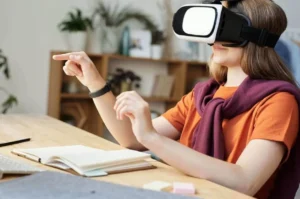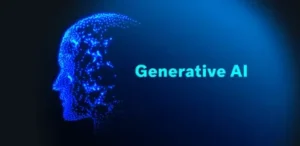Education is no longer limited to chalkboards, heavy textbooks, and half-asleep students staring at the clock. The entire sector is shifting toward digital experiences, and Virtual Reality has become one of the strongest drivers behind that shift. Not a gimmick, not a “nice-to-have,” but a practical tool that already reshapes how people learn across schools, universities, and corporate training.
Some traditionalists still insist that “we learned just fine without it,” but that logic collapses faster than an outdated server. Tools evolve — and education evolves with them.
Contents
- 1 Immersive Learning: When Students Stop Watching and Start Experiencing
- 2 Corporate Training: Faster, Safer, Cheaper
- 3 Soft Skills: Practicing What You Can’t Practice in Real Life
- 4 Accessibility and Equal Opportunities
- 5 The Roadblocks: It’s Not All Perfect Yet
- 6 Final Thoughts: VR Is Becoming the New Standard, Not a Trend
Immersive Learning: When Students Stop Watching and Start Experiencing
The biggest value of VR is immersion. Instead of passively reading or watching slides, learners step inside the subject. A student doesn’t just study ancient Rome — they walk the streets, listen to voices, and explore architecture as if they were there.
This changes behavior from “I heard about it” to “I’ve been there,” which significantly boosts retention and motivation. It’s the difference between watching a workout video and actually going to the gym.
Real examples of immersive learning:
• Exploring the human body in 3D
• Entering realistic chemistry labs without dangerous materials
• Practicing history lessons inside reconstructed ancient cities
• Visualizing complex mathematics instead of guessing what formulas mean
Corporate Training: Faster, Safer, Cheaper
VR has become a silent workhorse in corporate education. Companies use it to train employees for scenarios that are expensive, risky, or simply impossible to recreate physically.
Fire safety training? Done.
Machine operation? No broken equipment.
Customer service role-play? No awkward meetings.
Teams get consistent training, managers get measurable results, and the cost per trainee drops as soon as the VR setup is in place. Classic win-win.
Soft Skills: Practicing What You Can’t Practice in Real Life
VR isn’t only about flashy science simulations. It’s becoming a strong tool for soft-skills development:
• Public speaking practice in front of a virtual audience
• Communication training with AI-driven characters
• Conflict resolution simulations
• Leadership and decision-making exercises
For many learners, this feels like a safe sandbox where mistakes don’t come with consequences — perfect for building confidence.
Accessibility and Equal Opportunities
VR also breaks down geographical and physical barriers. Students from remote areas or with limited mobility can access the same high-level resources as those in top schools. A VR headset becomes a teleport to world-class labs, museums, and workshops that were previously unreachable.
That’s not a luxury upgrade — that’s equal access to education at scale.
The Roadblocks: It’s Not All Perfect Yet
To keep it real, VR isn’t a magic wand. There are blockers:
• Hardware is still pricey
• Not all teachers know how to integrate VR into the curriculum
• Some students get motion sickness
• Content creation requires time and technical expertise
But like any technology lifecycle, the curve is trending down — costs decrease, adoption grows, and the ecosystem matures.
Final Thoughts: VR Is Becoming the New Standard, Not a Trend
Virtual Reality is doing for education what smartphones once did for communication — quietly becoming the new normal. Immersive classrooms, safer corporate training, better soft-skills practice, and global accessibility aren’t futuristic concepts anymore. They’re happening now, and the companies and institutions that adapt early will lead the next decade of learning innovation.










